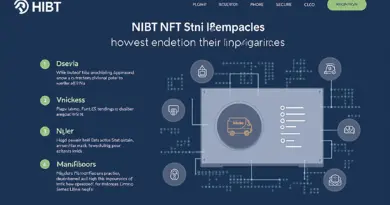How the “Robot Rush” Could Build Life-Changing Wealth
Hello, Reader.
If you push through the heavy “headline fatigue” we’ve dealt with this year, you’ll find some pretty fascinating news stories about robotics.
Take June, when Chinese universities Tsinghua University and China Agricultural University made headlines by fielding three humanoid robots on their soccer teams.
Or this month in London, where U.K.-based logistics company Apian is testing “robot dogs” to make hospitals and laboratories more efficient.
Then there’s Ai-Da, the robot artist who unveiled her painting of King Charles III at the United Nations this week.
Each of these robots is quite different than the other, but that’s the beauty of the robotics renaissance.
Robots are here… and they’re coming from everywhere… to do everything.
As Nvidia Corp. (NVDA) CEO Jensen Huang remarked recently…
The ChatGPT moment for robotics is coming… We’re working towards a day where there will be billions of robots, hundreds of millions of autonomous vehicles, and hundreds of thousands of robotic factories…
In other words, the science-fiction days of robotics are over… and the science-fact days are here.
So, what does that mean for us as investors?
As smart investors, we want to capitalize on this trend – or “robot invasion” – before it leaves us behind.
To make sure we don’t get left behind, in today’s Smart Money, I’m taking a look at research from ABB Robotics and the International Federation of Robotics (IFR). That research team has identified specific factors that could drive robot demand higher and fuel a long-term boom.
So, let’s break down those factors.
Then, I’ll explain how you can position yourself for the robotics’ “ChatGPT moment.”
Just like that brainy chatbot breakthrough created life-changing wealth for those who got in early, I want to show you how to profit from this robotics trend – one that’s heavily fueled by AI and already gaining momentum.
Let’s dive in…
The Robot Invasion
Robots and robotic processes of various types are already gaining widespread adoption in many industries.
According to a new report by the IFR, the global population of industrial robots now reaches more than 4 million and will top 6 million within the next three years.
The earliest generations of robotics featured pre-programmed automation –machines that performed specific tasks along an assembly line or within similarly structured settings. Robotic systems of this sort have been a big hit in the auto industry, for example, where they operate alongside humans to assemble, equip, and paint vehicles.
Even though preprogrammed robotics can deliver massive efficiency gains, the AI-enabled robots of the future will perform increasingly complex tasks, and do so in unpredictable, unstructured environments.
In other words, the “brains” of robots are finally becoming smart enough to control the “bodies” that engineers developed long ago.
As a result, the range of robotic services and solutions will explode in the era of AI. Companies of all sorts will line up to acquire robotic services and solutions.
This global “robot rush” is still in the early innings, but the research teams at ABB Robotics and at the IFR have identified a few factors that could accelerate demand for robots and fuel a long-term boom. A short list would feature…
- Onshoring of manufacturing
- Artificial intelligence advancements
- Falling barriers to adoption
- Ease of use
Here’s how each factor is creating the foundation for robotics’ surge…
Breaking Down the Boom
Onshoring. Long before tariffs became a daily part of the national dialogue, a powerful onshoring trend was well underway. U.S. companies have been deglobalizing their supply chains for several years now and repatriating major portions of them.
Robotics have facilitated this migration from offshore production to onshore.
Previously, the only way to slash production costs was to move production to low-cost locales like Mexico and China. But some companies can now “reshore” production cost-effectively because of the efficiencies that robotics provide.
Artificial Intelligence. As robots require AI-enabled skills, they will be able to expand their industrial “habitat” beyond traditional factory settings and into new sectors like drug development, retail operations, agriculture production, and construction.
They will also be able to assist in complex surgeries, deliver packages, and perform maintenance in challenging or hostile environments.
Falling Barriers to Adoption. Think: robot rentals. The business model called robotics-as-a-service (RaaS) removes a significant barrier to the adoption of robotics technologies. This model enables businesses to “subscribe” to robots, much like we do with our Microsoft Office or Salesforce platform accounts.
These RaaS subscriptions will not only supply the physical robots to customers, but also provide ongoing predictive maintenance, software upgrades, and operational guarantees. Because this model provides both predictable costs and ongoing support, it enables businesses to utilize robotics without a significant upfront investment, making automation more accessible.
Ease of Use. AI, combined with autonomous technologies like connected digital networks, will make robots easier to operate, enabling them to take on more tasks in new industries.
For example, an industrial robot could be equipped with sensors and software that makes it easy for customers to set up the robots themselves. As robots become more versatile, user-friendly, and cost-effective, demand will skyrocket.
And herein lies the opportunity…
The Future of Robots
According to Markets Research Future, the global robotics market will quadruple between now and 2032 – from $74 billion to $287 billion. That is a robust compound annual growth rate of 18.4%.
What’s more, a new Morgan Stanley report predicts the global market for humanoid robots, alone, will hit $5 trillion by 2050. Most of these robots will operate in commercial settings, the report states, but will also become household “appliances” eventually.
Although “we are not going to see a robot in every home overnight,” the report’s author Adam Jonas admits, that day is coming.
That’s why now is the perfect time to position yourself for this trend. Robots are here… and soon they will be everywhere.
At my research service, Fry’s Investment Report, we’re prepared to profit from this long-term robotics boom. And I want you to be prepared, too.
Several companies are racing to capitalize on this extraordinary robotics trend, and I’ve found one that presents a rare and timely investment opportunity.
This tech company has a growing robotics segment that’s rapidly gaining real-world traction, including a potentially transformative partnership with Amazon.com Inc. (AMZN).
It sits at the forefront of the next industrial revolution, providing essential technology for AI, automation, and robotics.
But I’m not only looking at pure robotics plays…
We’re also heavily invested in the broader AI boom that’s pushing robotics to where it is today. Whether that means investing in AI directly (chip companies), alongside AI (data centers), or in “stealth” AI (non-tech companies), we’ve got all our bases covered for the “robot rush.”
To learn more about the companies I’m tracking at Fry’s Investment Report and get the full details on this robotics trend, click here.
Regards,
Eric Fry
P.S. This has been a strange year for the stock market. And it’s about to get even stranger. After calling this year’s chaos on March 6, InvestorPlace’s Louis Navellier says another surprise is coming to the market in just a few weeks.
But if you know what’s coming, a little-known “green day” vehicle could double your money. It’s using a software tool that shows you the biggest potential jumps on 5,000 stocks – to the day – weeks before they occur… with 83% back-tested accuracy.
Click here to learn more – and try the tool out, free of charge.
The post How the “Robot Rush†Could Build Life-Changing Wealth appeared first on InvestorPlace.






